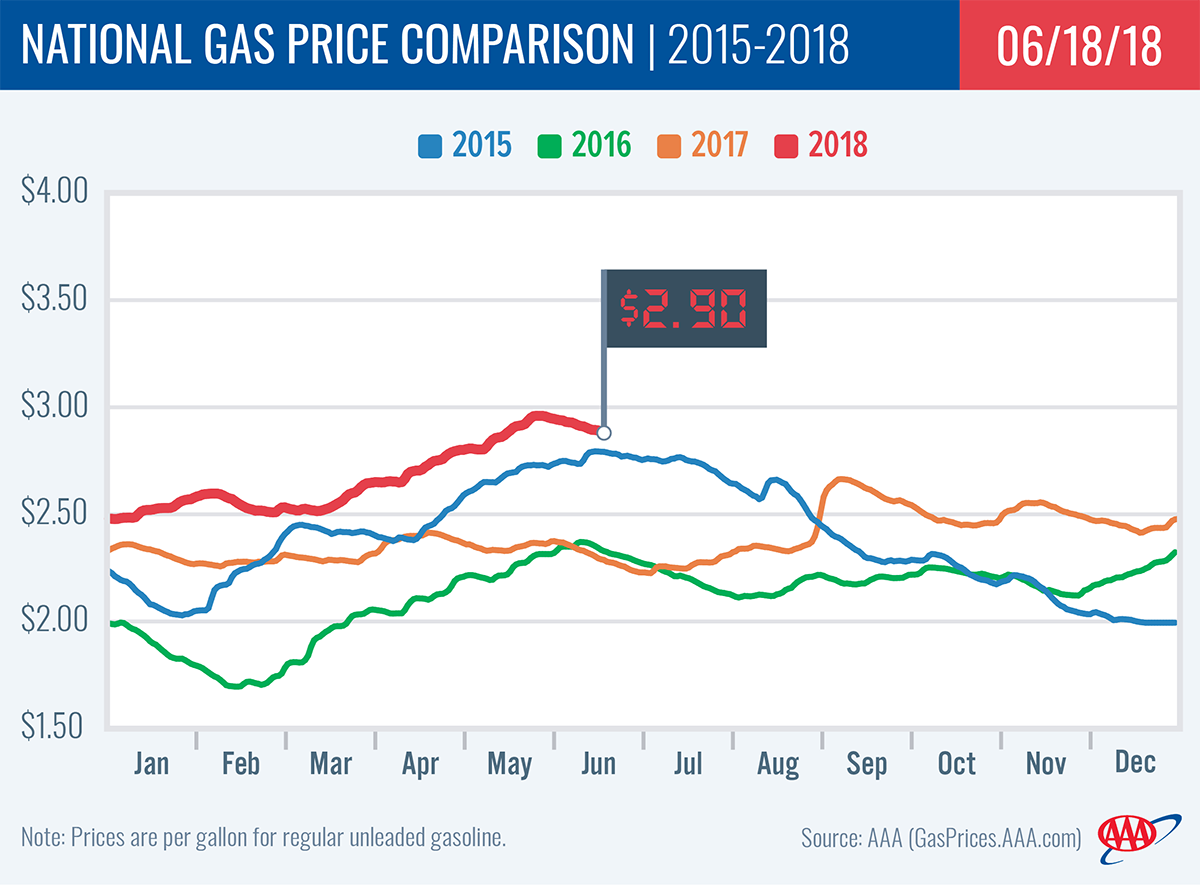Rising Grocery Bills: Inflationary Pressures On Food Prices Persist

Table of Contents
Understanding the Drivers of Rising Food Prices
Several interconnected factors contribute to the persistent rise in grocery bills. Understanding these drivers is the first step towards mitigating their impact on your budget.
Global Supply Chain Disruptions
Global supply chain disruptions have significantly impacted food availability and prices. Geopolitical instability, pandemics like COVID-19, and increasingly frequent extreme weather events have created a perfect storm. These disruptions ripple through the entire food system, from farm to table.
- Increased shipping costs: Fuel price hikes and port congestion have dramatically increased the cost of transporting food globally.
- Port congestion: Delays at major ports worldwide lead to spoilage and increased storage costs, ultimately impacting consumer prices.
- Labor shortages: A lack of workers across the supply chain, from farming to trucking, further exacerbates delays and increases costs.
- Reduced crop yields: Extreme weather events damage crops, reducing overall supply and increasing prices for remaining produce.
These factors contribute significantly to food inflation and the increasing global food prices we are experiencing.
Increased Energy Costs
The rising cost of energy plays a crucial role in driving up food production costs. Energy is essential at every stage of the food production process.
- Higher fertilizer costs: The production of fertilizers is energy-intensive, and increased fuel prices directly impact their cost. This leads to higher costs for farmers and ultimately higher food prices.
- Increased transportation expenses: As fuel costs rise, so do transportation costs for transporting goods from farms to processing facilities and ultimately to grocery stores. This adds significantly to the final price consumers pay.
- Energy-intensive food processing: Many food processing techniques rely heavily on energy, so increased energy prices directly translate to higher costs for processed foods.
The interconnectedness of energy prices and food production costs is undeniable, driving up the overall cost of food for consumers.
Climate Change and Extreme Weather
Climate change is intensifying extreme weather events, which have devastating consequences for food production and supply.
- Droughts: Prolonged periods of drought lead to crop failures, impacting yields and driving up prices for affected products.
- Floods: Excessive rainfall and flooding can destroy crops and damage infrastructure, disrupting the supply chain and increasing prices.
- Heat waves: Extreme heat can negatively affect crop growth and livestock productivity, leading to reduced supply and price increases.
- Impacting harvests and livestock: These weather events directly reduce the availability of food, pushing prices up due to lower supply.
The long-term impact of climate change on food security is a growing concern, contributing to the volatility and rising costs we see in grocery bills.
The Impact on Consumers
The persistent rise in grocery bills significantly impacts consumers, leading to changes in purchasing power and behavior.
Reduced Purchasing Power
Rising food prices directly reduce consumer purchasing power, forcing many to make difficult choices.
- Decreased spending on non-essentials: Consumers often cut back on non-essential expenses to afford groceries.
- Increased food insecurity: For many low-income households, rising food prices exacerbate food insecurity, making it challenging to afford adequate nutrition.
- Reliance on cheaper, less nutritious options: To stretch their budgets, consumers often opt for cheaper, less nutritious food options, potentially impacting their health.
The financial burden of rising grocery bills disproportionately affects vulnerable populations.
Changes in Consumer Behavior
Facing higher grocery prices, consumers are adapting their shopping habits and behaviors.
- Increased use of coupons and discounts: Consumers are actively seeking ways to save money through coupons, loyalty programs, and sales.
- Shopping at budget supermarkets: Many are shifting their shopping habits towards more budget-friendly supermarkets and stores.
- Cooking at home more frequently: Eating out less and cooking more meals at home is becoming a common way to manage grocery costs.
These changes reflect the significant impact of rising grocery bills on consumer behavior and spending habits.
Strategies for Managing Rising Grocery Bills
While the overall cost of groceries continues to climb, there are strategies consumers can adopt to manage their spending effectively.
Budgeting and Meal Planning
Careful budgeting and meal planning can significantly reduce grocery expenses.
- Using budgeting apps: Several apps can help track spending and create budgets, aiding in managing grocery costs effectively.
- Creating weekly meal plans: Planning meals in advance minimizes impulse purchases and reduces food waste.
- Storing food properly to prevent spoilage: Proper food storage prevents spoilage and reduces waste, saving money in the long run.
By adopting these simple techniques, consumers can significantly improve their grocery budget management.
Smart Shopping Techniques
Employing smart shopping strategies can help consumers save money on groceries.
- Using loyalty programs: Loyalty programs often offer discounts and rewards, making them a valuable tool for saving money.
- Shopping at discount stores: Discount stores and warehouse clubs often offer lower prices on groceries, particularly on bulk items.
- Comparing unit prices: Always compare unit prices to ensure you are getting the best value for your money.
- Using coupons: Coupons and discount offers can substantially reduce grocery bills.
By combining these smart shopping techniques with careful planning, consumers can significantly reduce their grocery expenses.
Conclusion
Rising grocery bills due to persistent inflationary pressures are a significant concern for many households. Understanding the factors contributing to these price increases – from global supply chain disruptions to climate change – is crucial. By employing effective budgeting strategies, smart shopping techniques, and adapting consumer behavior, individuals can better navigate these challenging economic times. Don't let rising grocery bills overwhelm you; take control by implementing these practical tips and managing your food expenses effectively. Learn more about managing the impact of rising grocery bills today.

Featured Posts
-
 Juergen Klopp Bir Duenya Devine Doenues Hikayesi
May 22, 2025
Juergen Klopp Bir Duenya Devine Doenues Hikayesi
May 22, 2025 -
 Core Weave Crwv Stock Soars Analyzing Thursdays Market Performance
May 22, 2025
Core Weave Crwv Stock Soars Analyzing Thursdays Market Performance
May 22, 2025 -
 Louths Rising Food Star Sharing Success Strategies With Other Companies
May 22, 2025
Louths Rising Food Star Sharing Success Strategies With Other Companies
May 22, 2025 -
 Quiz Sur La Loire Atlantique Histoire Gastronomie Et Culture
May 22, 2025
Quiz Sur La Loire Atlantique Histoire Gastronomie Et Culture
May 22, 2025 -
 Peppa Pigs Parents Host Gender Reveal Party A New Baby Arrives
May 22, 2025
Peppa Pigs Parents Host Gender Reveal Party A New Baby Arrives
May 22, 2025
Latest Posts
-
 Wisconsin Gas Prices Average 2 98 A 3 Cent Increase
May 22, 2025
Wisconsin Gas Prices Average 2 98 A 3 Cent Increase
May 22, 2025 -
 Gas Buddy Virginia Sees Drop In Average Gasoline Prices This Week
May 22, 2025
Gas Buddy Virginia Sees Drop In Average Gasoline Prices This Week
May 22, 2025 -
 Lower Gas Prices In Illinois National Trend Brings Relief To Consumers
May 22, 2025
Lower Gas Prices In Illinois National Trend Brings Relief To Consumers
May 22, 2025 -
 Illinois Gas Prices Continue To Fall Nationwide Decrease Impacts Drivers
May 22, 2025
Illinois Gas Prices Continue To Fall Nationwide Decrease Impacts Drivers
May 22, 2025 -
 Week Over Week Drop In Toledo Gas Prices
May 22, 2025
Week Over Week Drop In Toledo Gas Prices
May 22, 2025
